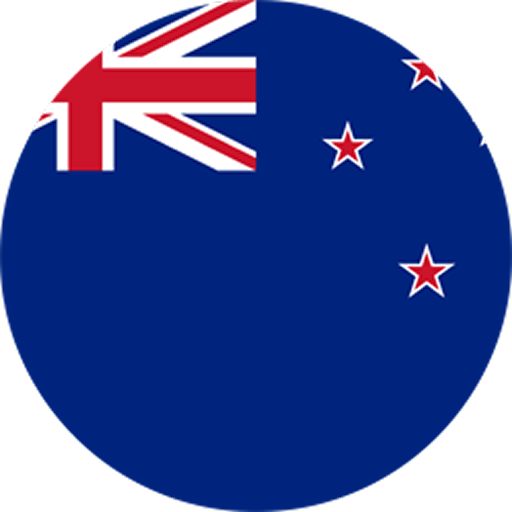
The skincare industry has grown into one of the strongest pillars of personal care, powered by consumers who want effective, clean, science-backed products. But behind every bottle of serum, every jar of cream, and every tube of cleanser lies a detailed manufacturing process that ensures safety, consistency, and performance. Today, skincare contract manufacturers like Swadesh Life Science have made this process more advanced, efficient and quality-driven than ever before.
Understanding how skincare products are made helps new beauty brands, entrepreneurs and even curious consumers appreciate the journey from formulation to final packaging. This blog takes a deep dive into the serum manufacturing process, cream manufacturing process, and cleanser manufacturing process—the three pillars of modern skincare.
The Foundation of Skincare Manufacturing
Before diving into individual products, it’s important to understand that every well-made skincare product begins with three essentials: a strong formulation, precise equipment and strict quality control. Skincare manufacturing blends cosmetic science with advanced technology to create safe and stable products that stay effective throughout their shelf life.
Reputed skin care contract manufacturing companies like Swadesh Life Science follow GMP standards and validated processes to ensure every batch maintains the same texture, efficacy and safety.
How are skin care products manufactured?
Skincare products are manufactured through a structured process that includes formulation development, ingredient preparation, mixing, emulsification, heating and cooling cycles, filling, sealing and final quality checks. In simple terms, skincare manufacturing involves combining active ingredients and base components under controlled conditions to create safe and stable products. The process is handled in GMP-certified facilities where hygiene, precision and consistency ensure the final product performs exactly as intended.
The Serum Manufacturing Process: Precision at Every Step
Serums are known for their lightweight texture and high concentration of active ingredients. Because they deliver targeted benefits—such as brightening, hydration, or anti-ageing—their manufacturing requires exceptional accuracy.
1. Ingredient Selection
Serums rely on potent actives like Vitamin C, hyaluronic acid, peptides or botanical extracts. Each ingredient must be tested for purity and compatibility.
2. Water Phase Preparation
Most serums start with purified water. The water is heated and sanitised to eliminate impurities.
3. Active Ingredient Blending
Key actives are added under controlled temperatures to maintain stability. Some actives degrade if overheated, so manufacturers must monitor each step closely.
4. Homogenisation
The mixture is blended using high-shear mixers to achieve a smooth, uniform solution.
5. Cooling and pH Adjustment
Once blended, the serum is cooled and pH-adjusted to make it safe for the skin.
6. Filling & Packaging
The finished serum is filled into bottles in a sterile environment and sealed to prevent contamination.
This entire serum manufacturing process focuses on stability, clarity, and preserving the potency of ingredients.
The Cream Manufacturing Process: Creating Stable Emulsions
Creams involve a more complex technique because they combine oil and water phases to form an emulsion. Texture, viscosity and absorbency depend heavily on how well these phases integrate.
1. Preparing the Oil Phase
Ingredients like emollients, butters, and oils are heated together until fully melted.
2. Preparing the Water Phase
Humectants, water, and water-soluble ingredients are heated separately.
3. Emulsification
The oil and water phases are combined under controlled temperatures. High-speed homogenisers ensure a stable emulsion with a smooth texture.
4. Cooling and Additions
Sensitive ingredients such as fragrances, vitamins, and herbal extracts are added once the mixture cools.
5. Testing Viscosity & Stability
Creams must hold their structure, so viscosity and stability tests are essential.
6. Filling & Sealing
Creams are filled into jars or tubes, ensuring uniform volume and hygiene.
The cream manufacturing process demands balance and accuracy to create a product that feels luxurious, spreads well and remains stable over time.
The Cleanser Manufacturing Process: Gentle Yet Effective Formulations
Cleansers come in gel, foam or cream formats but their core purpose is to remove dirt and oil without stripping the skin.
1. Base Preparation
Most cleansers begin with purified water and gentle surfactants. Surfactants are selected based on skin sensitivity and cleansing efficiency.
2. Thickening & Foaming Agents
These control consistency and lather.
3. Additives
Botanical extracts, vitamins, or hydrating agents like glycerin are added.
4. Mixing and pH Balancing
Cleansers must match skin-friendly pH levels, especially facial cleansers.
5. Filling
The final product is packed into tubes or pump bottles.
The cleanser manufacturing process focuses heavily on safety and mildness since cleansers touch the skin daily.
Why Contract Manufacturing Is Essential for Modern Skincare Brands
Modern cosmetic brands prefer skin care contract manufacturing because it allows them to focus on branding and marketing while experts handle formulation and production. Swadesh Life Science supports businesses with:
- Ready-to-develop formulations
- Custom formulations on request
- GMP-certified facilities
- Strict quality and safety processes
- Low and scalable minimum order quantities
- Support with packaging and product documentation
Contract manufacturing also reduces time-to-market, helps brands ensure consistency across batches and maintains high safety standards.
Quality Control: The Backbone of Skincare Manufacturing
Every batch produced by Swadesh Life Science undergoes extensive quality checks, including:
- Microbial testing
- pH analysis
- Stability testing
- Viscosity measurement
- Packaging compatibility checks
Quality ensures consumers get safe, effective skincare every time.
Conclusion
Serums, creams and cleansers may look simple on the shelf, but their manufacturing involves meticulous steps, scientific precision and deep knowledge of cosmetic chemistry. With advanced processes, GMP-compliant facilities and streamlined production, Swadesh Life Science supports brands in creating high-quality skincare products that meet today’s market expectations. Whether you’re building a new skincare line or expanding your product range, choosing a reliable skincare manufacturing partner can make all the difference.
Frequently Asked Questions
1. What makes professional skincare manufacturing different from homemade formulations?
Professional skincare manufacturing involves controlled processes, GMP standards, ingredient testing and advanced machinery that ensure product stability and safety. Unlike homemade mixes, factory-produced skincare undergoes microbial testing, pH checks and stability assessments, allowing brands to offer long-lasting, high-performance products to consumers with complete confidence.
2. Are serums harder to manufacture than creams?
Serums are more sensitive because they often contain active ingredients that degrade with heat or exposure to air. This requires low-temperature mixing, controlled environments and precision dosing. Creams, on the other hand, follow an emulsion-based method that is easier to stabilise, though both require professional handling to ensure smooth texture and consistency.
3. How long does it take to manufacture a batch of skincare products?
Depending on the product type, a typical batch may take 1–3 days for preparation, mixing and stability checks. Additional time goes into filling, sealing, labelling and final inspections. Serums may take slightly longer if they contain delicate ingredients that require gradual incorporation and cooling phases.



 :
:









